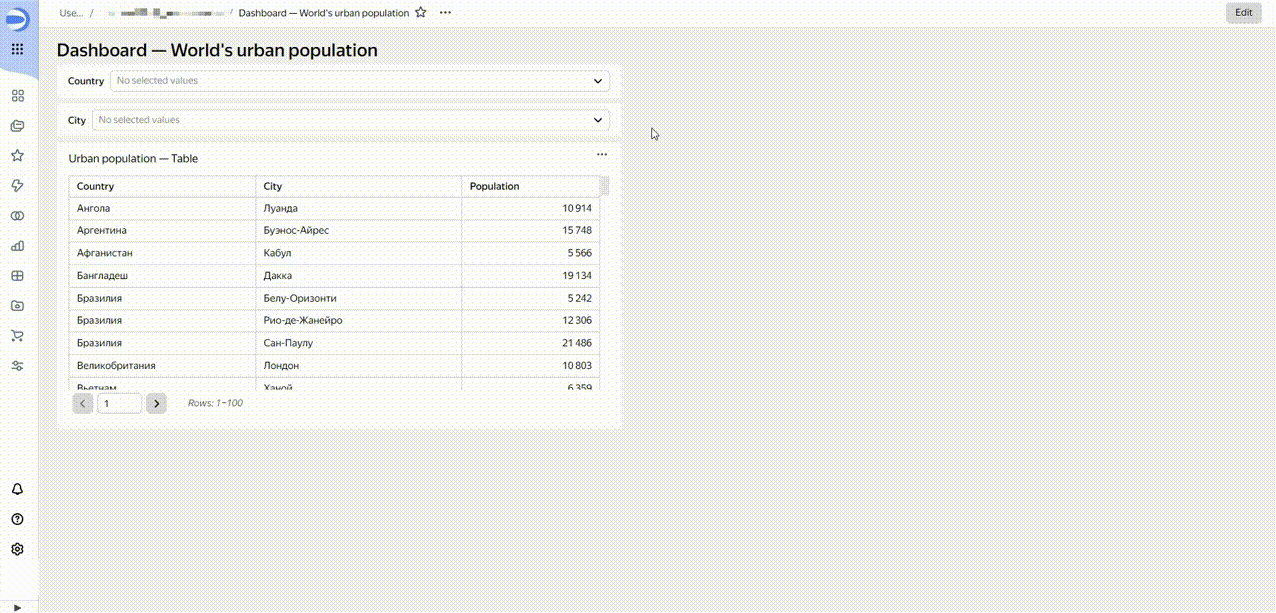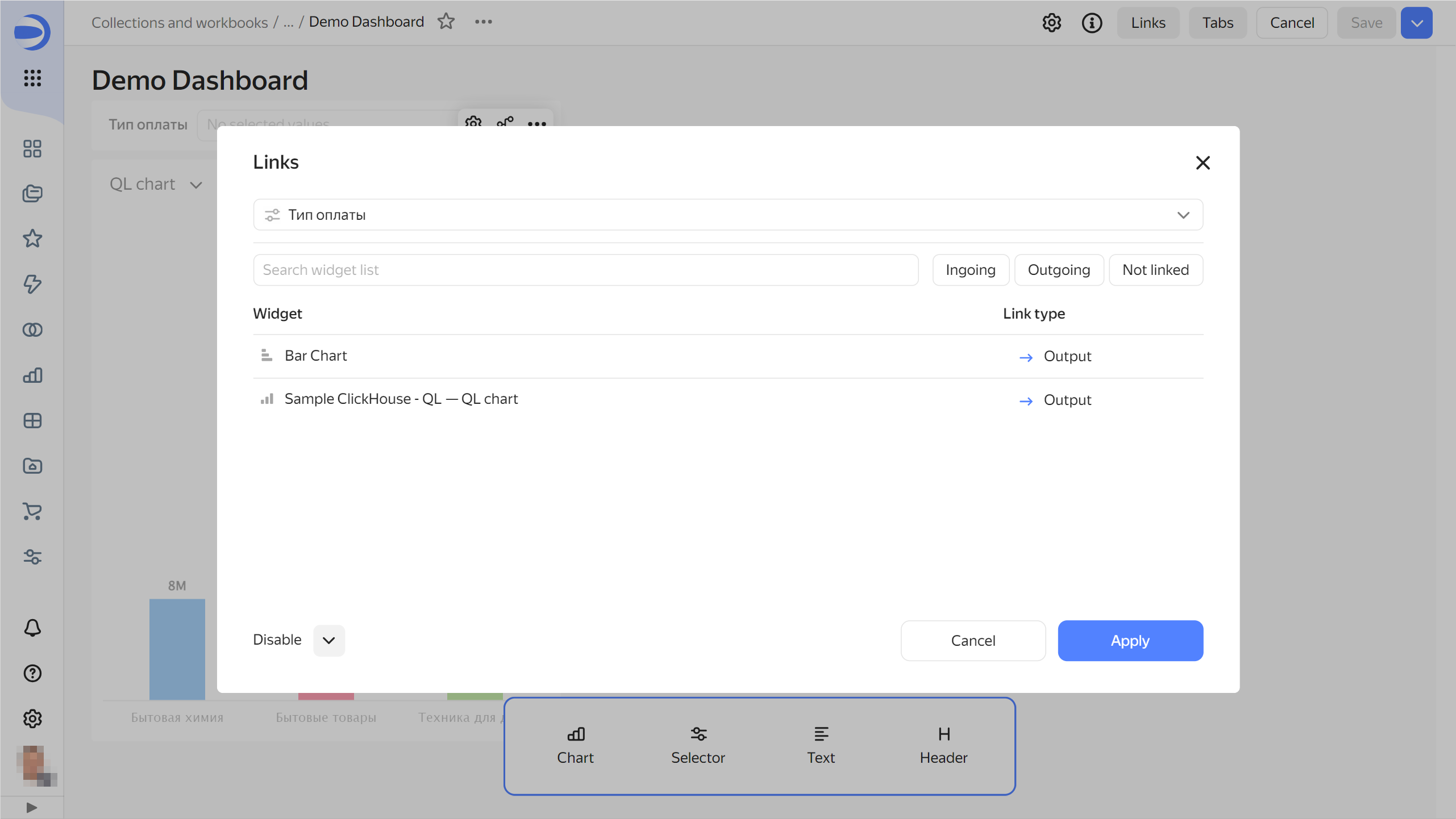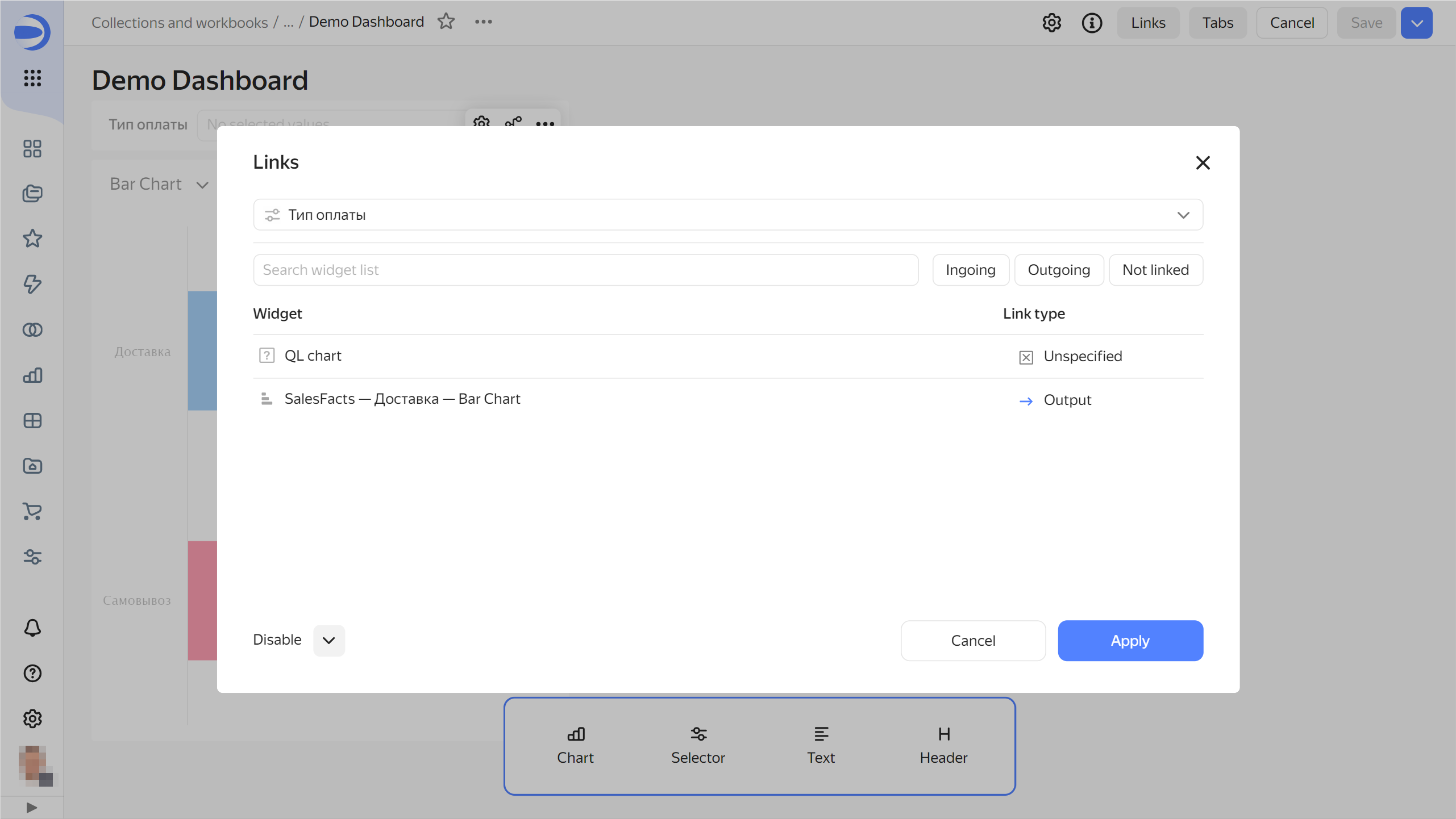Link in Yandex DataLens
A link decides how a selector influences one or more charts or other selectors. By default, there is a link between selectors and charts built from a single dataset. Selectors and charts based on different datasets can be linked manually using aliases.
You can choose an existing dataset field as a link or create your own field and manually set the selector values there. The fields used to establish a link are set in the alias configuration window.
You can use links to filter the values of selectors and charts. For example, if you select a country in the first selector on the dashboard, the second selector limits the list of cities (and vice versa).
Example of widget link on the dashboard

The field used by the selector to filter on must be included in the dataset used to construct a chart. Otherwise, the link will not work. For more information, see Joining Yandex DataLens data.
The link type determines how values in selectors and charts are filtered. The type is set in the links window in dashboard edit mode. For information on how to configure a link, see Configuring links on the dashboard in Yandex DataLens.
You can use the following types of links for a widget pair:
- Two-way: Two-way influence between the widgets.
- Incoming: Incoming influence.
- Outgoing: Outgoing influence.
- Not linked: Widgets are not linked together and have no mutual influence.
Some widgets cannot influence other widgets. The table below shows possible types of links between widgets:
| Affects/Affected | Selector | Chart |
|---|---|---|
| Selector | Two-way Incoming Outgoing Not linked |
Outgoing Not linked |
| Chart | Incoming Not linked |
— |
Note
You can add multiple charts to a single widget on the dashboard. The link between a QL chart and a selector will appear in the link configuration window only when you select that QL chart in the widget. If a different chart is selected in the widget, the QL chart link will be marked Undefined.
QL chart selected in the widget

A different chart selected in the widget

Alias
An alias is a link between fields of different datasets defining how widgets influence each other when linked.
Aliases allow you to link widgets that are based on different datasets. For example, if you create an alias using the [Region] and [Country] fields from different datasets, the [Region] field selector of one dataset will filter the chart data using the [Country] field of the other dataset.
Warning
Please note that you cannot create aliases for fields from the same dataset or fields with the same IDs from different datasets.
Creating aliases is required when you need to:
-
Establish links between selectors that are based on different datasets, so that the values of one selector filter the list of available values of another selector.
-
Establish links between a selector of the Based on dataset type from one dataset and charts from another dataset, so that the selector values filter the values in the charts.
-
Establish links between a selector of the Manual input type and other selectors, so that the values of one selector filter the list of available values of another selector.
Note
To establish a link with a chart created in Editor or a selector (JS), add the parameters specified on the Params tab to the list of widget (chart or selector (JS)) parameters on the dashboard.
You can specify an alias for a pair of linked widgets. In this case:
- Multiple aliases can be set for a single pair of widgets.
- An alias set for one pair of widgets is applied to all linked widgets that are based on the same datasets (which use the fields specified in the alias).
- An alias works within a single dashboard tab.
- To limit the use of aliases, set the link type between widgets to Not linked by the selected field. In this case, the widgets will have no influence for the selected field within the dashboard tab.
Note
If the links window already shows a link between the widgets, adding an alias for them is optional.
For more information about how to create aliases, see Creating an alias in Yandex DataLens.
You can delete links from an alias where more than two fields are linked. Delete a field from the alias if its associated link between datasets or widgets is not required on a dashboard tab. Learn more in Deleting an alias in Yandex DataLens.